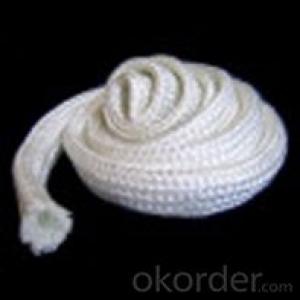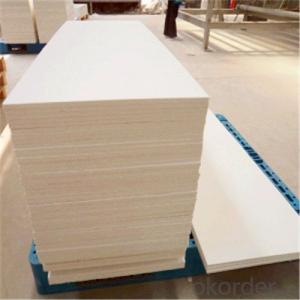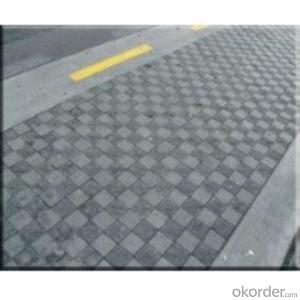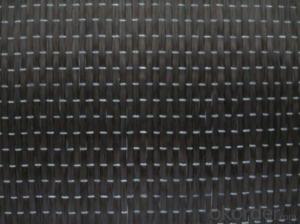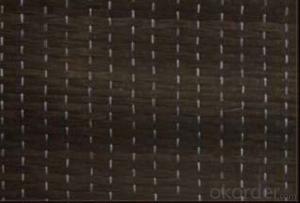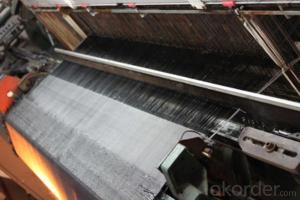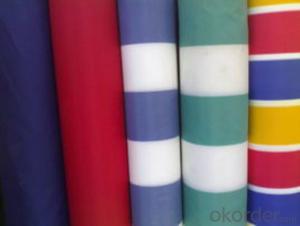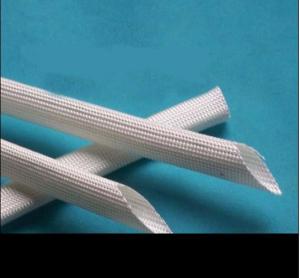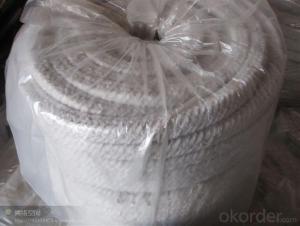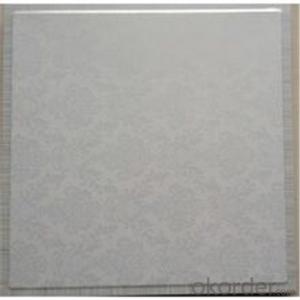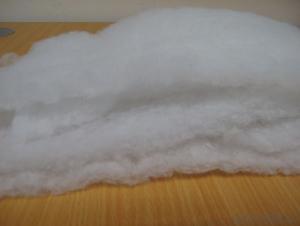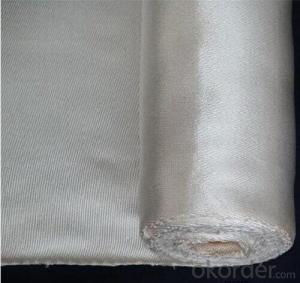High tensile insulating Ceramic Fiber bulk for industrial boiler
- Loading Port:
- Shanghai
- Payment Terms:
- TT OR LC
- Min Order Qty:
- 10 m.t.
- Supply Capability:
- 100 m.t./month
OKorder Service Pledge
OKorder Financial Service
You Might Also Like
Quick Details
| Place of Origin: | China (Mainland) | Shape: | Block | Material: | ceramic fiber |
| SiO2 Content (%): | 44-52% | Al2O3 Content (%): | 44-55% | MgO Content (%): | 0 |
| CaO Content (%): | 0 | Refractoriness (Degree): | Common (1580°< Refractoriness< 1770°) | CrO Content (%): | 0 |
| SiC Content (%): | 0 | Model Number: | DKJL | Brand Name: | |
| color: | white | Application:: | textile manufacture | ceramic fiber bulk: | high temperature ceramic fiber for furnace melting |
| fireproof material: | fireproof ceramic fiber bulk for sealing | Shrinkage (1800℉, 3h):: | 3% | Fiber Diameter: | 3-4.5 |
| Density (kg/m³ ):: | 128 | Working Temperature:: | 1200℃ | specification temperature:: | 1260℃ |
| Ultimate Strength (≥ MPa):: | 0.08 |
Packaging & Delivery
| Packaging Detail: | All the fibers are packed in sack with the packing weight(20kg) Or made according to customer's requirement |
| Delivery Detail: | within 20 days or as per your order quantity. |
Specifications
Ceramic Fiber Bulk for melting
1. Low heat storage and thermal conductivity
2. Excellent chemical and thermal stability
Our Services
Product Description
Refractory thermal insulation Ceramic Fiber Bulk
The production of our ceramic fiber spun/blowing bulk takes use of electric resistance furnace melting method with the characteristics of stable performance, long fiber, strong tensile strong, less shot, excellent thermal stability, clean and white color etc. it is the optimum material for the production of fiber textile and also the perfect material for sealing and filling.
Product Characteristics:
1. Low heat storage and thermal conductivity
2. Excellent chemical stability
3. Excellent thermal stability
4. No bond and corrosive material
5. Excellent thermal shock resistance
6. Excellent sound insulation
Item | COM | ST | HP | HA | HZ | |
Specification Tem(°C) | 1100 | 1260 | 1260 | 1360 | 1430 | |
Working Tem(°C) | 1050 | 1100 | 1200 | 1350 | ||
Color | white | white | white | white | white | |
Fiber dia(um) | Blowing | 2-3 | 2-3 | 2-3 | 2-3 | 2-3 |
Swinging | 3-4.5 | 3-4.5 | 3-4.5 | 3-4.0 | 3-4.0 | |
Chemical | Al2O3 | 44 | 46 | 47—49 | 52-55 | 39-40 |
Al2O3+SIO2 | 96 | 97 | 99 | 99 | - | |
Al2O3+SIO2+ZrO2 | - | - | - | - | 99 | |
ZrO2 | - | - | - | - | 15-17 | |
Fe2O3 | 0.2 | 0.2 | 0.2 | |||
Na2O+K2O | ≤0.5 | ≤0.5 | 0.2 | 0.2 | 0.2 | |
All the fibers are packed in sack with the packing weight: 20kg Or made according to customers s requirement. | ||||||
Application:
1. Raw material of fiber textile
2. Filling material of wall lining of industrial furnace
3. Raw material of wet method products
4. Raw material of fiber spraying, casting materials and coating materials
- Q:How do glass fiber textiles perform in terms of fire resistance?
- Glass fiber textiles possess remarkable fire resistance characteristics. Unlike other synthetic textiles, they do not burn or melt when subjected to high temperatures. Instead, they maintain their structural integrity and create a barrier against fire, effectively reducing the spread of flames and smoke. This makes glass fiber textiles highly desirable for applications where fire safety is of utmost importance. Additionally, glass fiber textiles are non-combustible, meaning they do not contribute to the fuel source of a fire. Even when exposed to flames, they do not emit toxic gases or harmful fumes, ensuring the safety of individuals in areas where fire emergencies occur. Moreover, glass fiber textiles have a high melting point, typically between 1000 and 1400 degrees Celsius. This characteristic guarantees their ability to endure intense heat without deforming or losing their fire-resistant properties. It also enables them to serve as a heat barrier, safeguarding underlying materials from direct contact with flames. In conclusion, glass fiber textiles possess outstanding fire resistance qualities. They are non-combustible, do not release toxic gases, and have a high melting point, making them a reliable choice for applications that prioritize fire safety.
- Q:Can glass fiber textiles be used for making electrical insulation materials?
- Yes, glass fiber textiles can indeed be used for making electrical insulation materials. Glass fiber textiles are known for their excellent electrical insulating properties, making them a popular choice in the electrical industry. These textiles have high dielectric strength, meaning they can withstand high voltages without being damaged or conducting electricity. Additionally, glass fiber textiles have low thermal conductivity, which helps in preventing heat transfer and maintaining the insulation integrity. They are also resistant to chemicals, moisture, and flame, making them suitable for various electrical applications. Overall, glass fiber textiles are a reliable and effective choice for making electrical insulation materials.
- Q:How does glass fiber textile contribute to energy efficiency?
- Glass fiber textile contributes to energy efficiency by providing insulation and thermal resistance. Its low thermal conductivity helps to reduce heat transfer, preventing the loss of warmth during cold weather and the penetration of heat during hot weather. This insulation property helps to reduce the reliance on heating and cooling systems, thus lowering energy consumption and improving energy efficiency in buildings. Additionally, glass fiber textile also enhances the acoustic properties of a structure, reducing noise pollution and further contributing to energy efficiency by minimizing the need for additional soundproofing materials and equipment.
- Q:Can glass fiber textiles be composted?
- No, glass fiber textiles cannot be composted because they are made from inorganic materials, specifically glass fibers, which do not break down naturally in composting processes.
- Q:Can glass fiber textile be used as insulation material?
- Glass fiber textiles can serve as an insulation material, given their exceptional thermal insulation properties. With their low thermal conductivity, glass fiber textiles possess the ability to resist heat transfer, making them suitable for insulation purposes. In fact, they are widely utilized in industries that necessitate thermal insulation, including construction, industrial equipment, and aerospace applications. By trapping air pockets within their structure, glass fiber textiles effectively reduce heat transfer. Furthermore, they offer additional advantages such as lightweightness, non-combustibility, and resistance to moisture, chemicals, and pests. These properties contribute to the popularity of glass fiber textiles as an insulation choice across various industries.
- Q:Can glass fiber textiles be used in solar panels?
- Glass fiber textiles, with their lightweight, flexibility, and high mechanical strength, are well-suited for incorporating into solar panels. They serve as reinforcement materials, ensuring structural integrity and safeguarding delicate solar cells. Furthermore, these textiles exhibit exceptional thermal stability, a crucial attribute for maintaining the efficiency and longevity of solar panels under elevated temperatures. By utilizing glass fiber textiles, solar panels can be enhanced in terms of durability, weight reduction, and overall performance improvement.
- Q:Can glass fiber textiles be used in sound-absorbing panels?
- Yes, glass fiber textiles can be used in sound-absorbing panels. Glass fiber textiles are known for their excellent sound-absorbing properties due to their ability to trap and absorb sound waves. They are commonly used in various acoustic applications, including sound-absorbing panels, to reduce noise levels and improve acoustics in various environments such as offices, theaters, and recording studios.
- Q:Can glass fiber textiles be used in the production of carpets and rugs?
- Carpets and rugs can indeed utilize glass fiber textiles. Renowned for their durability, strength, and ability to resist stains and fading, glass fiber textiles also possess remarkable fire resistance and exceptional thermal insulation properties. These remarkable attributes render glass fiber textiles highly suitable for carpets and rugs, particularly in areas subjected to heavy foot traffic or requiring resistance against wear and tear. Moreover, the ease with which glass fiber textiles can be woven into diverse patterns and designs offers an extensive array of aesthetic choices for carpets and rugs.
- Q:What are the advantages of using glass fiber textile?
- Glass fiber textile has several advantages. Firstly, it is incredibly strong and durable, making it ideal for applications that require high tensile strength. Secondly, it is resistant to heat, chemicals, and moisture, making it suitable for use in harsh environments. Additionally, glass fiber textile is lightweight, providing ease of handling and installation. Moreover, it has excellent electrical insulation properties, making it a preferred choice for electrical and electronic applications. Lastly, glass fiber textile is non-combustible, ensuring safety in fire-prone areas.
- Q:Can glass fiber textile be used in battery technology?
- Glass fiber textiles have the ability to be used in battery technology. These textiles are well-known for their strength, durability, and resistance to chemicals and heat. These qualities make them appropriate for a range of applications in battery technology. One possible use for glass fiber textiles in battery technology is as a separator material. Batteries contain positive and negative electrodes, and it is necessary to have a separator to prevent these electrodes from directly touching each other. Glass fiber textiles can serve as an effective separator because they can withstand high temperatures and resist degradation caused by the electrolyte found in batteries. Additionally, glass fiber textiles can function as reinforcement material in battery electrodes. Battery electrodes typically consist of a current collector and an active material that stores and releases energy during the charging and discharging process. By incorporating glass fiber textiles into the electrode structure, the overall strength and mechanical stability of the electrode can be improved, resulting in enhanced battery performance and longevity. Moreover, glass fiber textiles can be utilized in battery packaging to provide insulation and protection. Batteries generate heat while operating, and it is important to manage and dissipate this heat in order to ensure safe and efficient battery function. Glass fiber textiles can act as a thermal barrier, preventing excessive heat from escaping or entering the battery, thus maintaining optimal operating temperatures. In conclusion, glass fiber textiles can be used in various capacities within battery technology, including as separators, reinforcement materials, and thermal barriers. Their exceptional strength, durability, and resistance to chemicals and heat make them suitable for enhancing battery performance, safety, and longevity.
1. Manufacturer Overview |
|
|---|---|
| Location | |
| Year Established | |
| Annual Output Value | |
| Main Markets | |
| Company Certifications | |
2. Manufacturer Certificates |
|
|---|---|
| a) Certification Name | |
| Range | |
| Reference | |
| Validity Period | |
3. Manufacturer Capability |
|
|---|---|
| a)Trade Capacity | |
| Nearest Port | |
| Export Percentage | |
| No.of Employees in Trade Department | |
| Language Spoken: | |
| b)Factory Information | |
| Factory Size: | |
| No. of Production Lines | |
| Contract Manufacturing | |
| Product Price Range | |
Send your message to us
High tensile insulating Ceramic Fiber bulk for industrial boiler
- Loading Port:
- Shanghai
- Payment Terms:
- TT OR LC
- Min Order Qty:
- 10 m.t.
- Supply Capability:
- 100 m.t./month
OKorder Service Pledge
OKorder Financial Service
Similar products
New products
Hot products
Hot Searches
Related keywords
